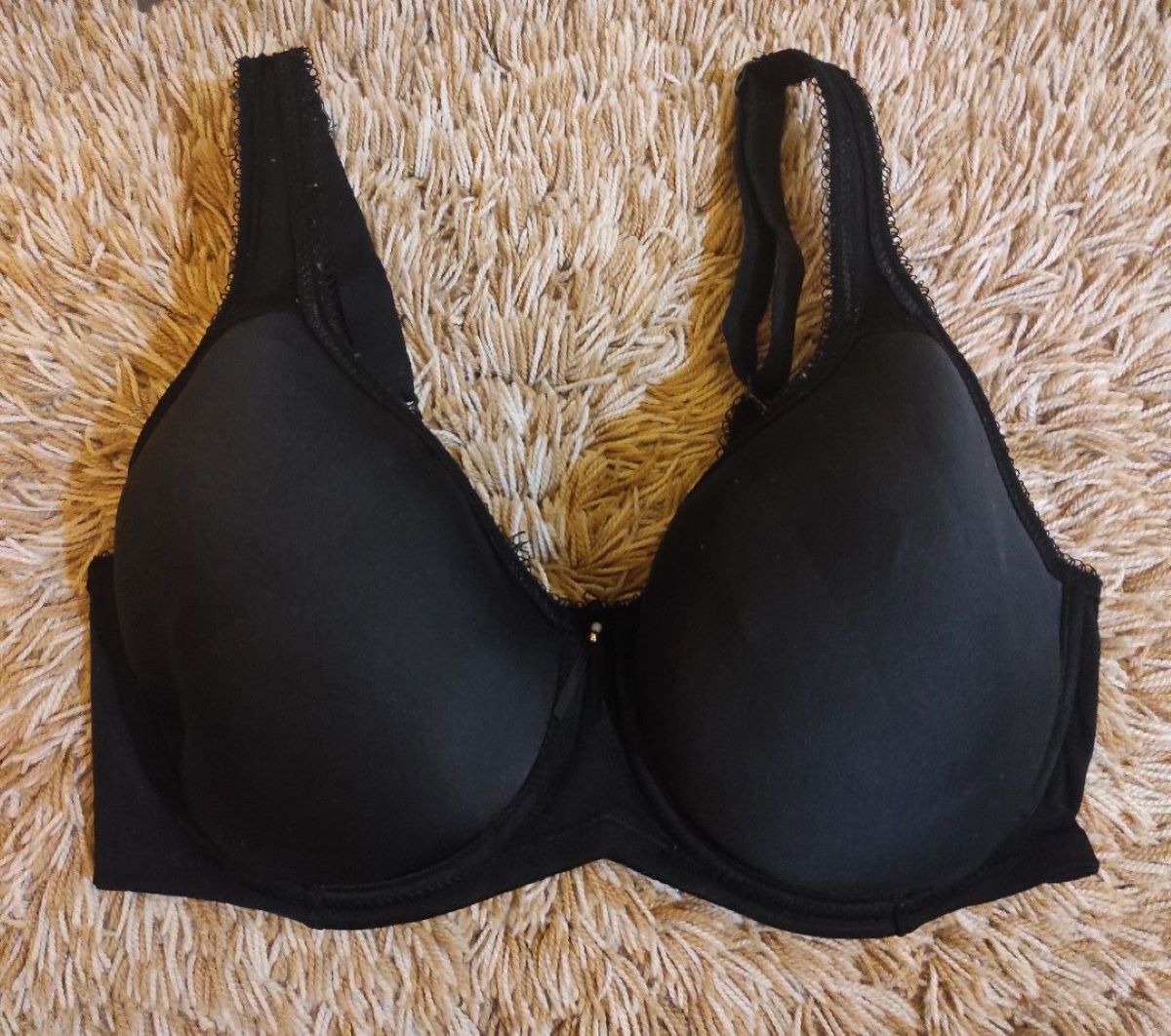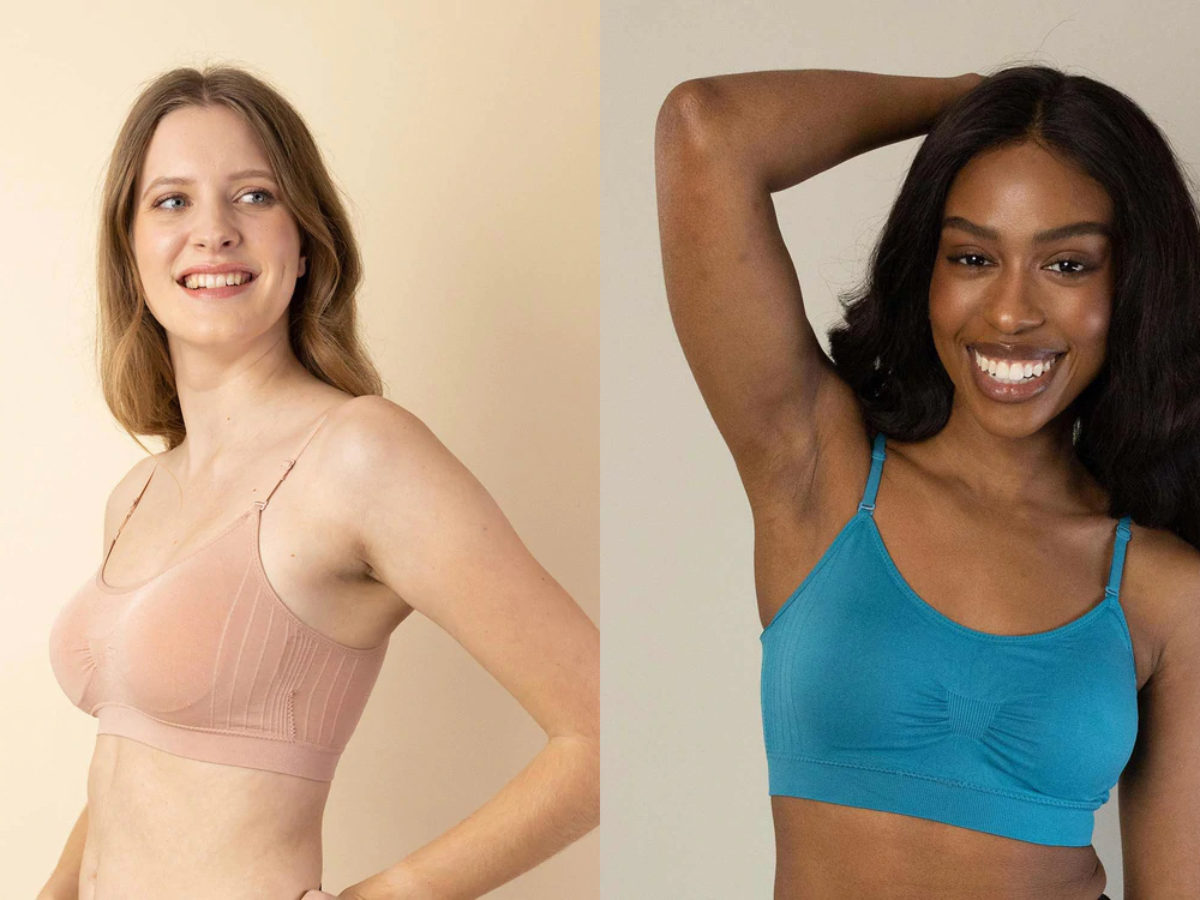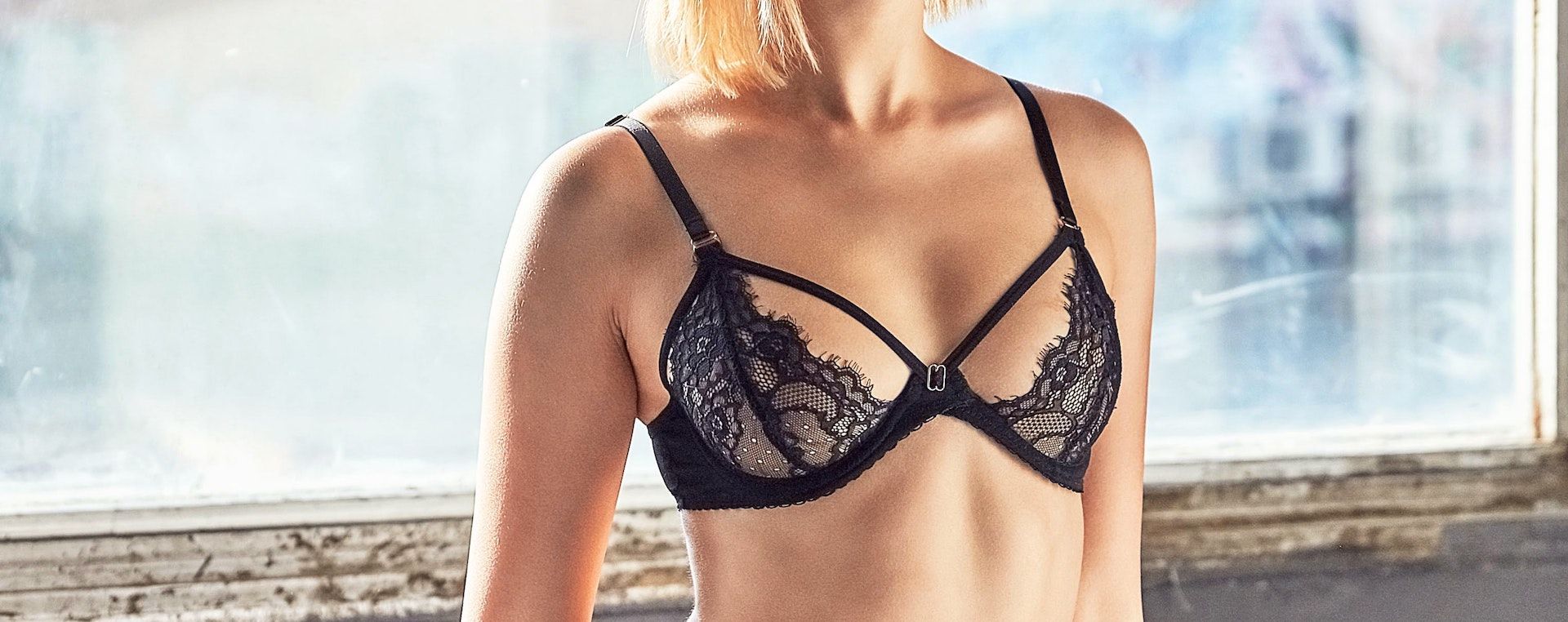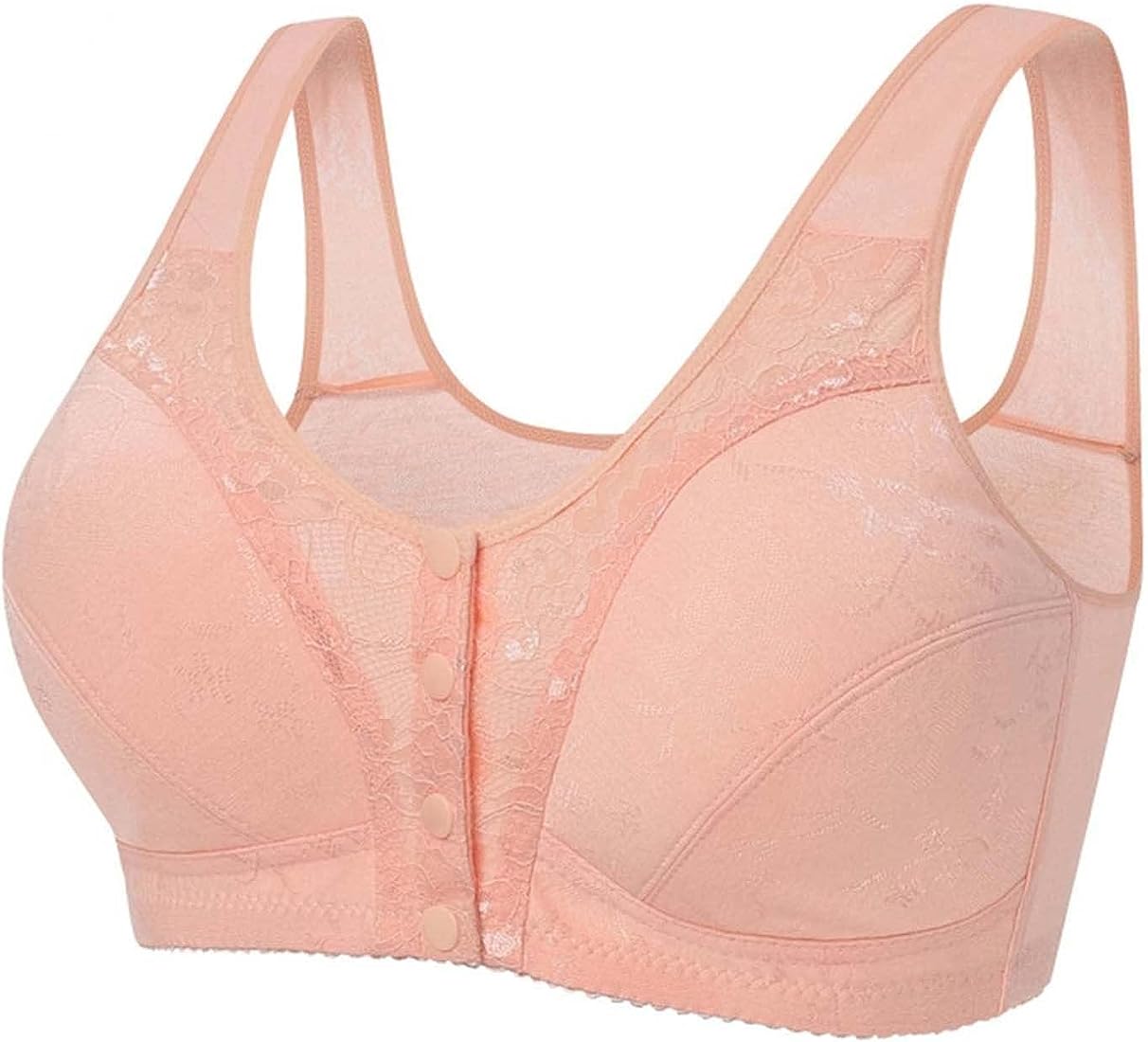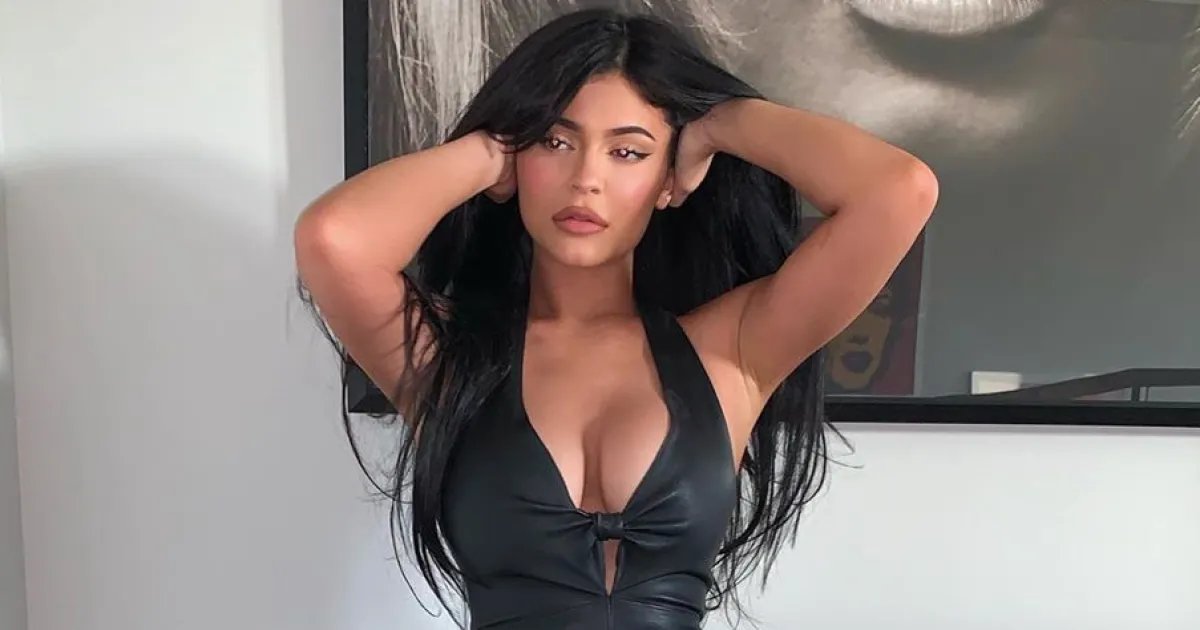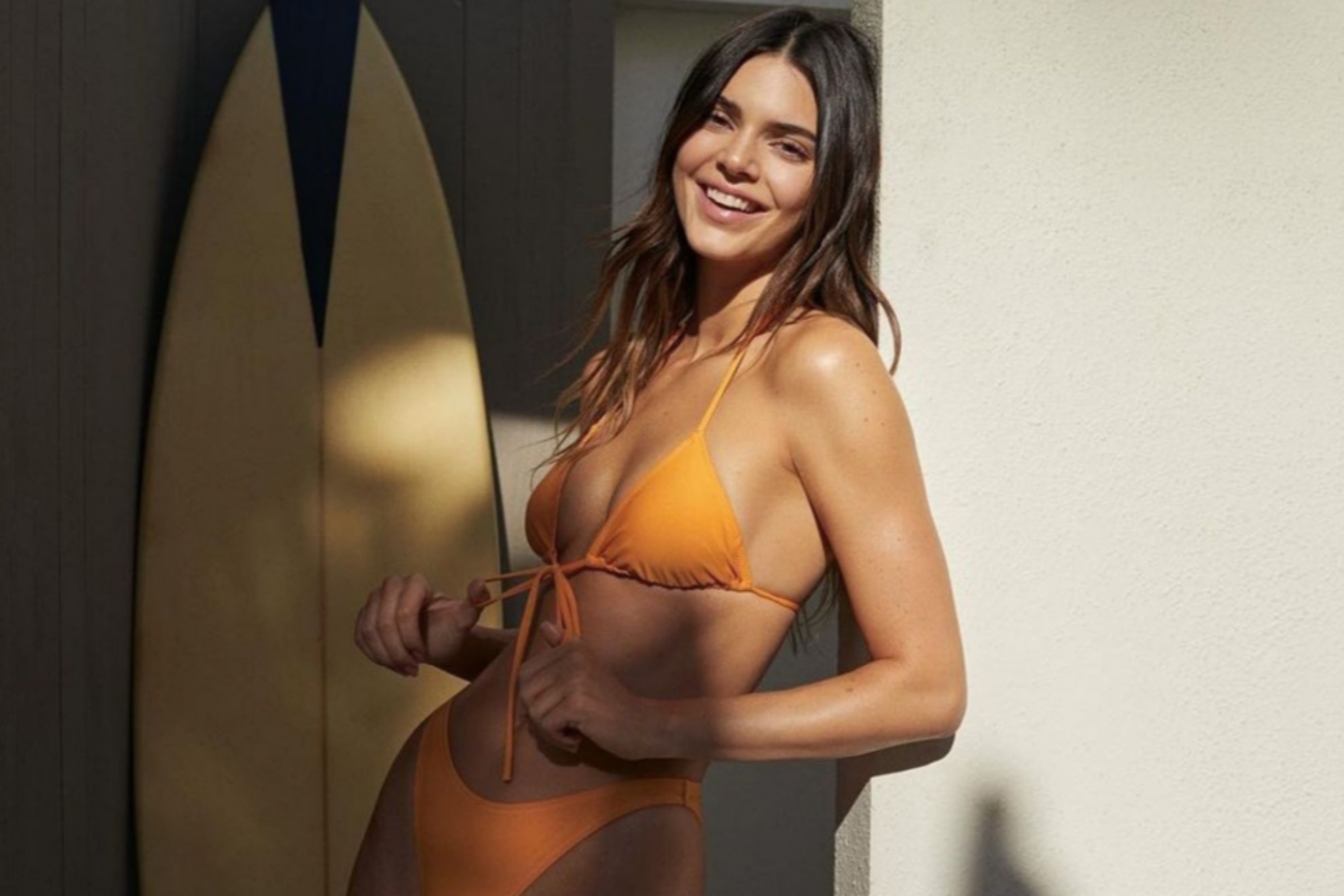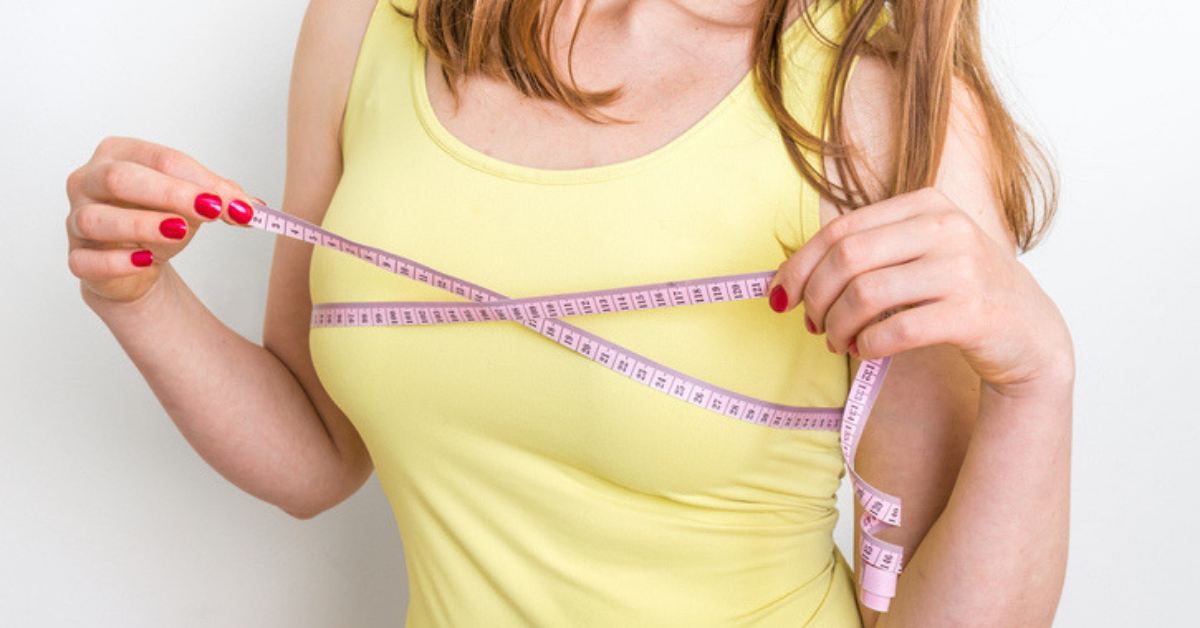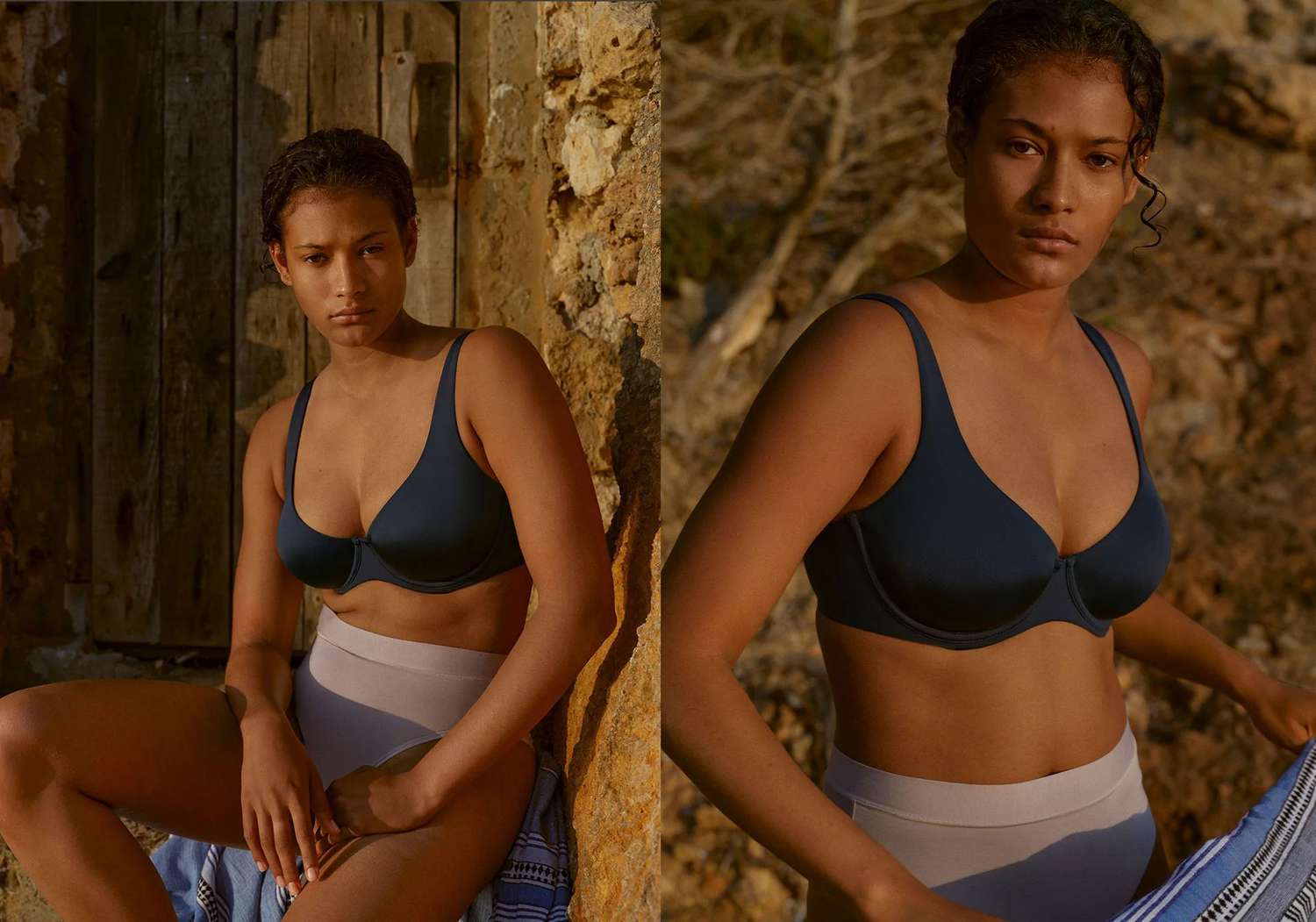Home>Women's Underwear>Bras>What Bra Size Comes After DD
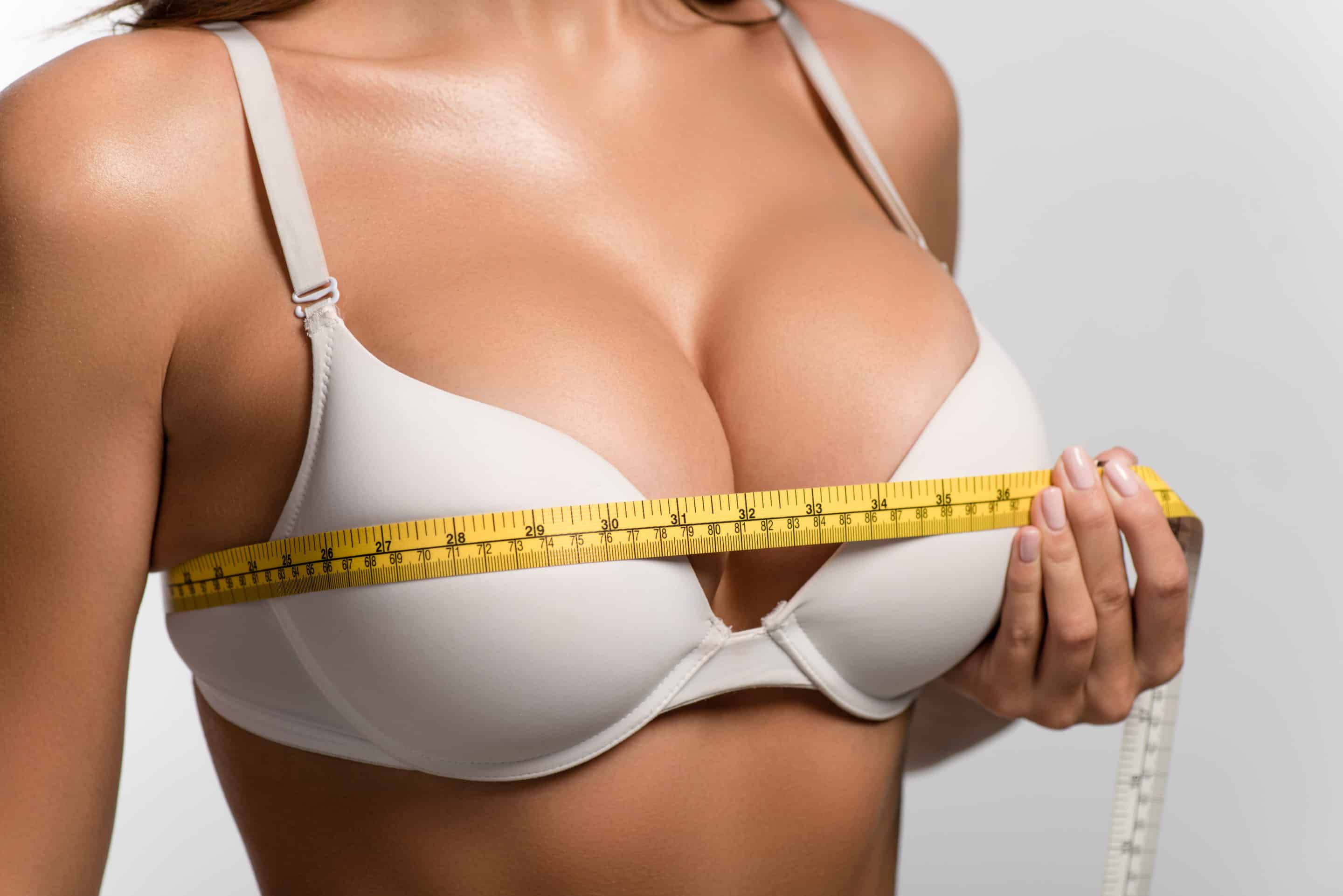

Bras
What Bra Size Comes After DD
Modified: August 4, 2023
Find out what bra size comes after DD and explore a wide range of bras for ultimate comfort and support. Discover the perfect fit for your curves.
(Many of the links in this article redirect to a specific reviewed product. Your purchase of these products through affiliate links helps to generate commission for Under-tec.com, at no extra cost. Learn more)
Table of Contents
Introduction
Welcome to the world of bras, where comfort, support, and style come together to make every woman feel confident and empowered. Bras are an essential undergarment that not only provides support to the breasts but also enhances their appearance. With various sizes, styles, and designs available, finding the perfect bra can sometimes feel like searching for a needle in a haystack.
One common question that many women have is what bra size comes after DD. As bra sizes can vary between different brands and countries, it can be a bit confusing to navigate the sizing chart. However, understanding the basics of bra sizing can help demystify the process and ensure you find a bra that fits you perfectly.
Whether you’re looking for a comfort bra for everyday wear or a special occasion bra that offers extra support and lift, knowing your correct bra size is crucial. In this article, we will delve into the world of bra sizes, explore the standard bra size chart, and discuss what comes after DD in terms of cup sizes.
So, if you’re ready to find out what bra size comes after DD and embark on a journey to find your ideal fit, read on!
Understanding Bra Sizes
Before we dive into what comes after DD in terms of bra sizes, let’s take a moment to understand how bra sizes are determined. A bra size consists of two measurements: the band size and the cup size. The band size refers to the measurement around your chest just below your bust, while the cup size indicates the difference between your band size and the measurement around the fullest part of your breasts.
When it comes to determining your band size, it is important to measure snugly around your ribcage, with the tape measure parallel to the ground. This measurement will give you an accurate band size, which typically ranges from 32 to 40, although some brands offer smaller or larger sizes.
Once you have your band size, you can move on to determining your cup size. The cup size is determined by subtracting your band size from the measurement around the fullest part of your breasts. Each inch difference corresponds to a specific cup size, typically labeled as A, B, C, D, and so on. In the case of DD, it indicates a four-inch difference between the band size and the bust measurement.
It is worth noting that bra sizes can vary between different brands and countries. For example, in European sizing, the DD cup size is often labeled as E. Therefore, it is essential to refer to the specific sizing chart of the brand you are purchasing from to ensure an accurate fit.
Now that we have a basic understanding of how bra sizes are determined, let’s explore the standard bra size chart and see what comes after DD.
Standard Bra Size Chart
The standard bra size chart serves as a useful reference point when it comes to finding the right bra size. It provides a range of band sizes and corresponding cup sizes, offering a variety of options to cater to different body types.
Here is a general overview of the standard bra size chart:
- Band Sizes: Band sizes typically range from 32 to 40, with some brands offering smaller or larger sizes. These measurements represent the circumference of the area just below the bust.
- Cup Sizes: Cup sizes are indicated by letters, starting from A and continuing in alphabetical order. After D, the double-letter system is often used, including DD, DDD (also known as F), DDDD (also known as G), and so on. This pattern continues with each additional letter indicating an increased difference between the band size and the bust measurement.
For example, a standard bra size chart may include sizes such as 34B, 36C, 38D, 40DD, and so on. Remember that cup sizes are relative to the band size, so a 34D will have a smaller cup volume than a 38D.
It’s important to note that the standard bra size chart is a guideline, and individual preferences and body shapes may require some adjustments. Additionally, different brands may have slight variations in their sizing, so it’s always a good idea to refer to their specific size chart for the most accurate fit.
Now that we have covered the basics of bra sizing and the standard size chart, let’s explore what comes after DD in terms of cup sizes.
Going Beyond the DDD Cup Size
For those who require a cup size larger than DDD, the alphabet continues with additional double letters. After DDD, the next letter is often labeled as F, followed by G, H, and so on. This progression allows for an extended range of cup sizes to accommodate different breast volumes.
It’s important to note that cup sizes can vary between different brands and countries. In some sizing systems, especially in Europe, the labeling may skip the double letters and go straight to E after D, followed by F, G, and so on. It’s essential to refer to the specific brand’s sizing chart to understand their cup size progression accurately.
Understanding your cup size beyond DDD is crucial in finding a bra that provides the perfect fit and support for your breasts. Having a larger cup size doesn’t mean compromising on comfort or style. Many brands specialize in catering to fuller busts, offering a wide range of bras that are both supportive and fashionable.
When shopping for bras beyond the DDD cup size, look for features such as wider bands, additional hooks and eyes for extra support, thicker straps, and reinforced materials. These elements help distribute the weight of larger breasts more evenly, ensuring optimal comfort and reducing strain on the shoulders and back.
If you find that your cup size exceeds the range offered by most brands, specialty and custom sizing options may be worth exploring. Some lingerie companies offer made-to-measure bras that are specifically tailored to your individual measurements, ensuring the perfect fit and support.
Remember, finding the right bra size is all about feeling comfortable and confident. Don’t be discouraged if you fall into a higher cup size category. Embrace your unique shape and explore the plethora of options available to enhance both your style and self-assurance.
Now that we have explored what comes after DDD in terms of cup sizes, let’s delve into the various factors that can affect your bra size.
Specialty and Custom Bra Sizing
While the standard bra size chart caters to a wide range of body types and cup sizes, some individuals may find that their unique measurements don’t fit within the standard sizing options. This is where specialty and custom bra sizing come into play, offering a personalized solution for those who require a more tailored fit.
Specialty bra brands and lingerie boutiques understand that every woman’s body is unique, and their sizing options reflect this diversity. These brands often offer a wider range of sizes, including smaller band sizes, larger cup sizes, or both. They focus on catering to specific body proportions and measurements that may not be adequately addressed by mainstream brands.
Custom bra sizing takes personalization to the next level by creating bras that are made specifically to your individual measurements. This option is ideal for individuals with very specific size requirements or those who struggle to find a bra that fits comfortably due to their unique body shape.
When opting for custom bra sizing, a professional bra fitter will take precise measurements and create a bra that is tailored to your unique proportions. This ensures a superior fit, optimal support, and enhanced comfort. Custom-sized bras may also offer additional features such as adjustable straps, hidden support panels, or specialized construction to address specific fit concerns.
While specialty and custom bra sizing can be more expensive than off-the-rack options, the benefits of a perfectly fitted bra that provides exceptional comfort and support are invaluable. Investing in a well-fitting bra can alleviate discomfort, minimize back and shoulder pain, and enhance your overall posture and confidence.
If you find that your bra size falls outside the range offered by standard brands, consider exploring specialty and custom bra sizing options. Consult with a professional bra fitter or research reputable brands that specialize in catering to unique sizes and shapes. Embrace the opportunity to celebrate your body and find a bra that makes you feel beautiful and comfortable.
Now that we have explored specialty and custom bra sizing, let’s delve into the various factors that can affect your bra size.
Factors Affecting Bra Size
When it comes to bra sizing, it’s important to understand that several factors can influence your measurements and the size you wear. Being aware of these factors can help you find a bra that fits you comfortably and provides the support you need. Here are some factors that can affect your bra size:
- Weight Fluctuations: Changes in weight, whether due to gain or loss, can impact your breast volume and overall body shape. It’s essential to reevaluate your bra size regularly to ensure a proper fit.
- Pregnancy and Breastfeeding: During pregnancy and breastfeeding, hormonal changes can cause your breasts to increase in size. It’s common for women to experience fluctuations in their bra size during this time.
- Age and Hormones: As we age, our bodies naturally change, including our breast shape and density. Hormonal shifts, such as those that occur during menopause, can also impact breast tissue and size.
- Menstrual Cycle: Hormonal fluctuations during the menstrual cycle can cause temporary changes in breast size and sensitivity. It’s common for some women to experience slight changes in their bra size during different phases of their cycle.
- Breast Surgery: Any surgical procedures, including breast augmentation, reduction, or reconstruction, can alter your breast size and shape, potentially requiring a change in bra size.
- Posture and Weight Distribution: Your posture and the way your weight is distributed can affect the appearance and support needs of your breasts. Proper posture and wearing a well-fitted bra can help lift and support the breasts more effectively.
- Individual Breast Shape and Asymmetry: Each woman has her own unique breast shape and size, and it’s common for breasts to have slight asymmetry. It’s important to find a bra that accommodates your individual shape and provides balanced support.
- Incorrect Bra Size: Wearing the wrong bra size can significantly impact how your breasts look and feel. Ill-fitting bras can cause discomfort, dig into the skin, and lack proper support. Getting professionally fitted and choosing the right size is essential for comfort and proper breast health.
These factors highlight the importance of regularly assessing and updating your bra size to ensure the best fit and support. It’s recommended that you measure yourself or seek professional fitting assistance every six months, or whenever you notice significant changes in your body.
Now that we’ve explored the factors that can affect your bra size, let’s move on to discussing proper bra fitting techniques.
Proper Bra Fitting Techniques
Proper bra fitting is essential for not only comfort but also optimal support and breast health. Wearing a bra that fits perfectly allows you to move freely and confidently, without any discomfort or pain. Here are some techniques to ensure a proper bra fit:
- Measurements: Start by taking accurate measurements of your band size and bust size. Use a soft measuring tape and ensure it is parallel to the ground when measuring your band size, just below your bust. For your bust measurement, wrap the tape around the fullest part of your breasts, making sure it is not too tight or too loose.
- Band Fit: The band should fit snugly around your torso, parallel to the ground. It should provide support without digging into your skin or riding up. If the band feels too tight or too loose, adjust the hooks and eyes accordingly to find the perfect fit.
- Cup Fit: The cups should fully cover your breasts, with no spillage or bulging. They should also lay flat against your chest, without any gaps or wrinkling. If you have underwire, it should sit comfortably against your ribcage without poking or pinching. Adjust the shoulder straps for a secure and comfortable fit.
- Center Gore: The center gore, the part of the bra between the cups, should lie flat against your sternum. If it lifts away from your body, you may need a larger cup size or a different style of bra that suits your breast shape.
- Snugness: A well-fitting bra should feel snug but not constricting. It should stay in place when you move and provide support to your breasts. Adjust the band and shoulder straps to achieve the perfect level of snugness without causing discomfort or leaving marks on your skin.
- Try Different Styles: Different bra styles can fit differently, even in the same size. Experiment with different styles, such as balconettes, full cups, or plunge bras, to find the ones that best suit your breast shape and offer the desired level of support and coverage.
- Professional Fitting: If you’re unsure about your bra size or find it challenging to find a comfortable fit, consider seeking professional bra fitting assistance. Bra fitting specialists have the knowledge and experience to measure you accurately and recommend styles that cater to your unique needs.
Remember, the key to a proper bra fit is finding a balance between comfort, support, and style. Take the time to try on different bras, adjust the fit, and don’t be afraid to seek assistance. Embrace the journey of finding the perfect bra that makes you feel confident and comfortable!
Now that we’ve discussed proper bra fitting techniques, let’s address some common misconceptions about bra sizes.
Common Misconceptions About Bra Sizes
When it comes to bra sizing, there are several misconceptions that can lead to confusion and frustration. Let’s debunk some of the most common misconceptions about bra sizes:
- Bigger Number, Bigger Body: One common misconception is that a higher band number automatically indicates a larger body size. However, the band size represents the measurement around the ribcage, not your overall body size. A smaller-framed person can have a larger band size if they have a wider ribcage.
- Cup Size is Static: Another misconception is that cup size is a fixed measurement. Cup size is relative to band size, so a cup size may vary as you adjust your band size. For example, a 34C bra has the same cup volume as a 36B and a 32D.
- DD is Huge: Many people believe that DD cup size is enormous, but cup size does not solely determine breast size. The cup size is relative to the band size, so a DD cup on a smaller band size may not be as large as it seems.
- One Size Fits All: There is no universal bra size that fits every person. Bra sizing varies between brands, styles, and even individuals. It’s essential to try on different sizes and styles to find the perfect fit for you.
- Bra Size Doesn’t Change: Your bra size can fluctuate due to various factors such as weight loss or gain, pregnancy, hormonal changes, or aging. It’s crucial to reassess your bra size regularly and make adjustments as needed.
- Wireless Bras are Less Supportive: While underwire bras are known for their support, wireless bras can also provide excellent support and comfort. The key is finding the right style and fit that suits your needs and preferences.
- No Need for Bra Fitting: Many people assume that they can guess their bra size or that professional bra fitting is unnecessary. However, getting professionally fitted by an expert can help you discover your correct size and ensure the best fit and support.
Understanding and debunking these misconceptions can help you navigate the world of bra sizing with greater confidence and knowledge. Remember that everyone’s body is unique, and there is no standard size or shape. Embrace your individuality and prioritize finding a bra that makes you feel comfortable, supported, and confident.
Now that we’ve addressed common misconceptions about bra sizes, let’s move on to discussing how to find the perfect bra for you.
Finding the Perfect Bra for You
Finding the perfect bra goes beyond just knowing your measurements. It involves understanding your preferences, body shape, and individual needs. Here are some tips to help you find the ideal bra:
- Know Your Measurements: Start by measuring yourself accurately or seeking professional fitting assistance to determine your band and cup size. This provides a baseline to work with when trying on different styles and brands.
- Consider Your Body Shape: Different bra styles suit different body shapes. For example, if you have a fuller bust, you may prefer a full-cup bra for more coverage and support. Balconettes or push-up bras may work well for those with a shallower bust.
- Think About Your Lifestyle: Consider your daily activities and wardrobe when choosing a bra. If you have an active lifestyle, sports bras or wireless bras with extra support may be suitable. If you often wear fitted or low-cut tops, consider plunge or push-up bras for a flattering look.
- Try on Multiple Sizes and Styles: Don’t be afraid to experiment with different sizes and styles to find the perfect fit. Brands and styles can vary in their fit, so it’s worth trying on a few options to see which ones feel the most comfortable and supportive.
- Pay Attention to Materials and Construction: Look for bras made from high-quality materials that offer both comfort and durability. Consider features like adjustable straps, multiple hook-and-eye closures, and wide bands for added support and customization.
- Listen to Your Comfort Level: Ultimately, the best bra for you is one that feels comfortable and supportive throughout the day. Trust your instincts and choose a bra that makes you feel confident, without any pinching, digging, or discomfort.
- Take Care of Your Bras: Proper care can extend the lifespan of your bras and maintain their shape and support. Follow the care instructions provided by the manufacturer, typically handwashing or using a delicate cycle in a lingerie bag, and avoid drying them in a dryer.
Remember, finding the perfect bra may require some trial and error. Be patient with yourself and take the time to try on different styles. Look for brands that offer a wide range of sizes and designs to cater to your individual needs. And most importantly, embrace the process and celebrate your unique shape and size.
Now that we’ve explored tips for finding the perfect bra, let’s wrap up our journey through the world of bras.
Conclusion
Choosing the right bra is a personal and empowering experience. Understanding bra sizes, debunking common misconceptions, and knowing your individual needs are key to finding the perfect fit. Remember that bra sizes can vary between brands and countries, so it’s important to refer to specific size charts and try on different styles.
Factors such as weight fluctuations, pregnancy, and hormonal changes can affect your bra size, highlighting the importance of periodically reassessing and updating your measurements. Proper bra fitting techniques, including measuring correctly, finding the right band and cup size, and considering your body shape and lifestyle, can greatly enhance comfort and support.
Don’t be afraid to explore specialty and custom bra sizing if you fall outside the standard size range. These options can provide a personalized fit tailored to your unique measurements. Additionally, taking care of your bras and listening to your comfort level will help ensure they last and continue to support you for longer.
Embrace your body’s uniqueness and prioritize finding a bra that makes you feel comfortable, confident, and supported. With a wide variety of sizes, styles, and designs available, there is a perfect bra out there for you. Whether it’s a comfortable everyday bra or a special occasion piece that makes you feel fabulous, finding the right bra will enhance your overall well-being and boost your self-esteem.
So, go ahead and embark on your bra-fitting journey. Embrace the process, trust your instincts, and rejoice in the empowerment that comes with finding the perfect bra for you.
